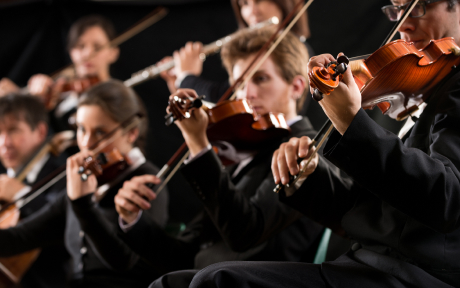
Classical music has been around for centuries, but its power to evoke emotion and stir the soul
has not diminished with time. From the grandeur of Beethoven's symphonies to the delicacy of
Mozart's operas, classical music has the ability to move us in ways that few other art forms can.
In this article, we'll explore its overwhelming power and how it has been used to great effect in
popular culture. We'll also take a closer look at Vienna, the birthplace of some of the most
significant pieces of classical music in history, and the city's historic concert venues that have
become pilgrimage sites for musicians and music lovers from around the world. Whether you're
a seasoned classic aficionado or a newcomer to the genre, join us on a journey through the
timeless beauty of Ludwig van Beethoven, Mozart, Haydn, Strauss and more and their enduring
impact on the human soul.
There are some things in our life that have the power to make us feel. Joy, humor, sadness,
dread, happiness, nostalgia… Some of them can give us a small spark of those feelings. They
paint a smile onto our faces, gloss our eyes or let us get lost in memories.
But then there are things that turn this small spark into an overwhelming firework. The smile
turns into a fit of laughter until our stomach hurts, our glossy eyes suddenly overflow with tears
and we get so lost in the past that we suddenly call that one friend we cherished so deeply back
in school and haven’t spoken to in over 10 years.
But what is it? What has the power to move us in such a way?
One answer to this question, and to us the most universal one, is classical music.
Now hold on, hold on. Maybe now you think: “I know SO many people who couldn’t care less
about orchestras, operas and everything in between”
That is exactly our point: you don’t need to care about it in order for it to make you feel. That's
proof of its undeniable power. This is why it is being used throughout so many aspects of our
lives. As many people, who aren’t particularly familiar with this genre, don’t even realize. For
those of you who do, it will come as no surprise that the emotional force of symphonies, arias,
concertos and much more has been used in pop-culture for a long time.
For example:
Those are just two of our favorite examples out of many many more. We chose these, because
they have one thing in common, apart from their undeniable beauty.
They were both written and/or completed, as well as abundantly performed in Vienna, the
beautiful capital of Austria. The city that inspired some of the most important composers of
human history to write some of the most meaningful and recognized pieces of classical music.
It is the birthplace of pieces like:
Once you yourself set foot in this incredible city you will understand why. Every year, people
from all over the world not only come to visit Vienna for this exact reason, they sometimes even
come to stay. For classical musicians it is an honor and lifelong goal to perform in Vienna’s
many historic venues.
One of the most famous being the St. Peter’s Church in the heart of the city.
The church was built in the early 18th century in the Baroque style. In the 19th century,
Peterskirche became a popular venue for concerts and recitals, thanks in part to its excellent
acoustics and central location. Many of the most famous composers and musicians of the time
performed here, including Franz Schubert, Johann Strauss II, and Franz Liszt.
Definitely not to play any favorites, but Liszt concert in St.Peter’s Church was reported to be so
successful, that he was showered with flowers by his devoted fans. What a finale! Well done
Franz.
But what makes church acoustics so special?
Here’s an example:
Have you ever heard yourself singing in your bathroom and thought to yourself: “Okay, I am the
next Madonna. Let me check my bank account if my fortune has arrived yet.”
Our little tip: Try singing the same song in a church (maybe not during mass). We won’t go into
too much science, but the high stone walls allow sound to reverb for a longer time, which makes
it richer in depth. Your bathroom has a similar effect. Let’s call it the lite-version of acoustic
phenomena.
So you take your seat within the massive halls of the St.Peter’s Church, the orchestra starts to
play, the choir starts to sing and the sound bounces off the walls directly into your heart, all at
the same time, all at once. This is the moment you will be overcome with joy, happiness,
sadness, longing. Sometimes one, sometimes all.
It is our promise to you.
Consider this: no matter if you are a visitor or a resident in this old, beautiful and mysterious city
with its hidden alleys, ancient palaces, green parks and arguably rude waiters. Round off your
walk through the beautiful Wiener Prater or your stroll through the majestic gardens of
Schönbrunn with a concert of one of Mozart’s most famous pieces “Lacrimosa” in one of the
most famous concert locations for classical music in the world.
Visit our online shop for a closer look into our program and to purchase your ticket to an
experience that will stay with you for the rest of your life.
Enjoy your stay, enjoy Vienna and most of all: enjoy the unaccompanied sound of the ancient
walls of St.Peter’s Church.
Visit our Sites on Social Media.
We present you the most impressive moments in our concerts. Be part of the story.
Saint Peter’s Church Vienna
Peterskirche Wien
Petersplatz, 1010 Vienna / Wien
Austria / Österreich
U-Bahn-Station – Metro Station
U1,U3 Stephansplatz
